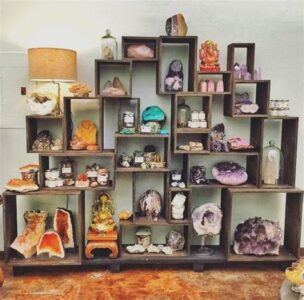Introduction
Chrysocolla, a captivating gemstone known for its vibrant blue-green hues, has been revered throughout history for its enchanting beauty and remarkable properties. Its name, derived from the Greek words “chrysos” (gold) and “kolla” (glue), aptly captures its association with gold-bearing deposits. This article delves into the fascinating world of chrysocolla, exploring its geology, metaphysical qualities, and potential applications in various fields.

Geological Characteristics
Chrysocolla primarily forms in the oxidized zones of copper deposits, where it occurs as a secondary mineral. It is typically found in association with copper minerals such as malachite, azurite, and turquoise. The gem’s distinctive blue-green coloration is primarily attributed to the presence of copper ions, while its hardness ranges from 2.5 to 4 on the Mohs scale.
Metaphysical Properties
Chrysocolla has been widely used for centuries in spiritual practices and crystal healing. It is believed to possess a calming and harmonizing effect, fostering peace and tranquility within the mind and body. Other metaphysical properties attributed to chrysocolla include:
- Enhances communication and self-expression
- Promotes emotional healing and forgiveness
- Balances the throat chakra, facilitating clear and resonant speech
- Connects to the element of water, supporting fluidity and intuition
- Aids in meditation and spiritual growth
Practical Applications
Beyond its metaphysical uses, chrysocolla has also found practical applications in various fields:
- Art and Jewelry: Chrysocolla is prized by artists and jewelers for its stunning color and versatility. It is often used in paintings, mosaics, and gemstone jewelry.
- Construction: Ground chrysocolla is sometimes employed as a pigment in paints and coatings due to its resistance to fading and weathering.
- Decorative Objects: Chrysocolla’s vibrant hues and intricate patterns make it a popular choice for decorative objects, such as bowls, vases, and figurines.
Innovative Applications
Research and innovation have opened up new possibilities for the use of chrysocolla:
- High-Performance Batteries: Chrysocolla has been explored as a potential material for next-generation batteries due to its high capacitance and long cycle life.
- Water Purification: The absorptive properties of chrysocolla suggest its potential as a filtration medium for removing contaminants from water.
- Biomedical Applications: Chrysocolla’s antimicrobial and anti-inflammatory properties have sparked interest in its use as a wound dressing and in wound healing therapies.
Tables
| Property | Value |
|---|---|
| Hardness | 2.5 – 4 Mohs |
| Color | Blue-green |
| Crystal System | Orthorhombic |
| Luster | Vitreous to earthy |
| Transparency | Translucent to opaque |
Pain Points
Individuals seeking to use chrysocolla for specific purposes may encounter certain pain points:
- Limited Availability: High-quality chrysocolla is not readily available, especially in larger sizes.
- Variable Quality: Natural chrysocolla varies significantly in color, clarity, and patterning, making it challenging to find uniform specimens.
- Processing Difficulties: Chrysocolla’s softness and porosity make it susceptible to damage during cutting and polishing.
Motivations
Despite these pain points, there are several motivations driving the use of chrysocolla:
- Its unique metaphysical properties: Chrysocolla’s reputation for fostering peace, communication, and intuition has made it a popular choice for spiritual practices.
- Its aesthetic appeal: The captivating blue-green hues and intricate patterns of chrysocolla enhance its visual appeal, making it desirable for art, jewelry, and decorative applications.
- Its potential for innovation: Ongoing research and development continue to uncover novel uses for chrysocolla in areas such as high-performance batteries, water purification, and biomedical therapies.
Tips and Tricks
- For Jewelry Designers: When incorporating chrysocolla into jewelry designs, consider using protective settings or bezels to minimize damage.
- For Artists: Experiment with different painting techniques to harness the full range of chrysocolla’s colors and textures.
- For Spiritual Practitioners: Enhance the energy of chrysocolla by placing it near the throat chakra during meditation or visualization practices.
- For Researchers: Explore the use of chrysocolla nanoparticles to improve its performance in batteries and other applications.
Step-by-Step Approach
For those seeking to incorporate chrysocolla into their lives:
- Identify the Purpose: Determine how you intend to use the chrysocolla, whether for metaphysical, aesthetic, or practical purposes.
- Research and Source: Research suppliers and vendors to find high-quality chrysocolla that meets your specifications.
- Clean and Care: Clean and maintain your chrysocolla regularly to preserve its beauty and energy.
- Experiment and Explore: Experiment with different ways to use and experience the unique properties of chrysocolla in your life.
Conclusion
Chrysocolla is a captivating gemstone with a rich history, captivating metaphysical properties, and diverse practical applications. From its use in ancient rituals to its potential in modern technologies, chrysocolla continues to inspire and intrigue. By understanding its properties and exploring its innovative possibilities, we can harness the power of this remarkable mineral to enhance our lives and contribute to advancements in various fields.




























